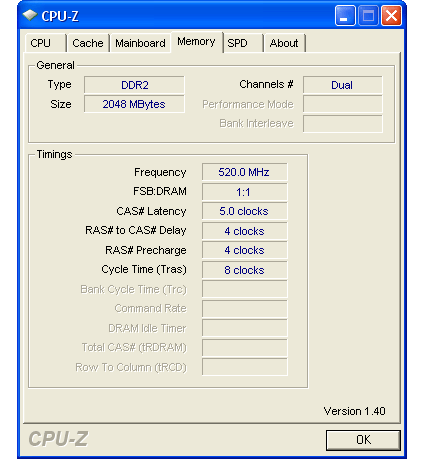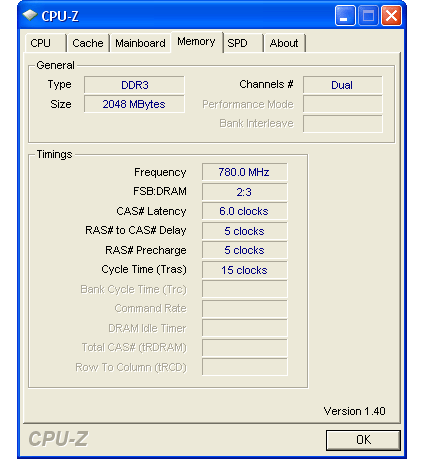Extreme FSB: Taking the E6750 Beyond 4 GHz
Memory Optimization
Let's begin with the base rate, that is to say, the stock CPU speed by which we will gauge the performance advantages of overclocking.
Tom's Hardware has been testing DDR2 motherboards at a 1066 MHz data rate and CAS 4-4-4-12 for several months. That speed, which works out to two times the actual clock speed of Intel's Quad Data Rate FSB1066, conveniently works out to a standard 1.6x memory multiple when used with its FSB1333.
The DDR3 motherboards wouldn't allow anything higher than 1333 MHz data rate to be chosen from BIOS at stock bus speed, far short of the memory's rated 1600 MHz. Even so, we've found no noticeable performance advantage to running dual-channel memory configurations beyond 1.5 times FSB clock. Accordingly, the best performing choice would be to use the best-possible timings with the RAM set to around 500 MHz (1000 MHz data rate) with this 333 MHz FSB clock (FSB1333) CPU.
On the other hand, we've found no penalty to running memory at 1.6x FSB clock, and this is a setting available to both DDR2 and DDR3 motherboards. Using this clock speed at the best possible timings provides an excellent perspective on the DDR2 versus DDR3 debate.
The real surprise is that in spite of the widely-held belief that DDR3 suffers from horrible latency, this Super Talent DDR3 memory reached the same 4-4-4-12 timings that have become the performance standard for "extreme" DDR2-1066.
While the Gigabyte P35T-DQ6 was perfectly willing to run at the above timings, the minimum CAS setting of the Asus Blitz Extreme is 5 cycles. Thus, the Blitz Extreme is twice handicapped in benchmarks: first by not overclocking as well as the other three boards, and second by being the only board to use 5-4-4-12 at the processor's stock speed.
Now let's move on to look at the changes necessary to get the highest possible clock speed from the Core 2 Duo E6750 without causing a memory crash. Increasing the FSB beyond 500 MHz clock (FSB2000) made high memory multipliers impossible: the next available speed beyond "synchronous mode" is 1.2 times FSB clock, resulting in a 1248 MHz data rate that wasn't stable on either DDR2 motherboard. Thus, the memory had to be slowed to synchronous mode.
Get Tom's Hardware's best news and in-depth reviews, straight to your inbox.
Even at the slowest setting, though, neither DDR2 motherboard would allow stable operation of Corsair's Dominator PC2-8888 at the same 4-4-4-12 latencies it normally reaches at 1066 MHz using a slower FSB. Because both motherboards were affected, the only rational reason for the looser memory requirement is that the chipset's DDR2 memory controller is struggling to cope with the higher FSB.
Meanwhile, the dropping the memory multiplier to "only" 1.5 times FSB clock on the DDR3 boards allowed it to maintain very nice 6-5-5-15 latency values at an astounding 1540 MHz.
Super Talent's DDR3 was able to clock much higher than this, but increasing the memory multiplier to 1.6x required loosening the timings to a rather ordinary-sounding CAS 7. The lower latencies did require a small increase in voltage, from the memory's rated 1.80 volts up to 2.00 volts. Hardcore overclockers are currently pushing the stuff to astounding new heights at 2.25 volts.



